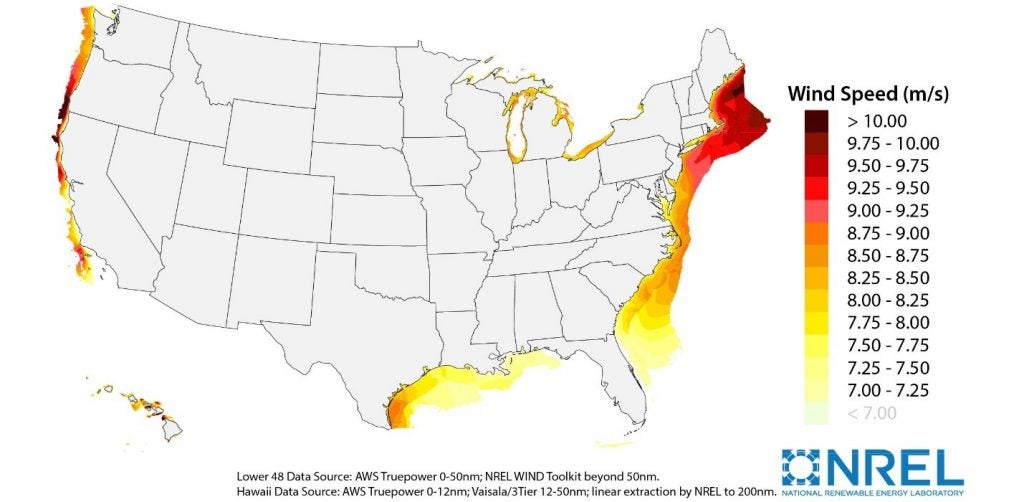This question was supplied by the ‘Ask the Experts’ database managers.
Reviewed by: Jeff Grybowski
Last Update: July 22nd, 2020
At the Global Ocean Summit Series: Session 4, Jeff Grybowski (Former CEO of Deepwater Wind) explained why the United States’ East Coast is an economically advantageous location for the development of offshore wind.
First, there is demand. The Northeast is comprised of highly concentrated coastal communities. From an energy perspective, this poses a problem—it is difficult to build power plants that are large enough to meet the demand in these populated areas where property values are especially high.

This is where offshore wind comes into play. The US Northeast has a large concentration of high wind speeds that are optimal for the development of offshore wind turbines1. The figure below from NREL shows a map of these coastal wind speeds where the darker red indicates the higher speeds.
The final factor that marks the Northeast as an attractive location for offshore wind is the buildable location. As Grybowski says, “another happy coincidence [is] that exactly where we have both supply of power and a great need for this power, we have a location that’s buildable for offshore wind”.
Additional Resources
Office of Energy Efficiency & Renewable Energy Offshore Wind Research and Development
https://www.energy.gov/eere/wind/offshore-wind-research-and-development
